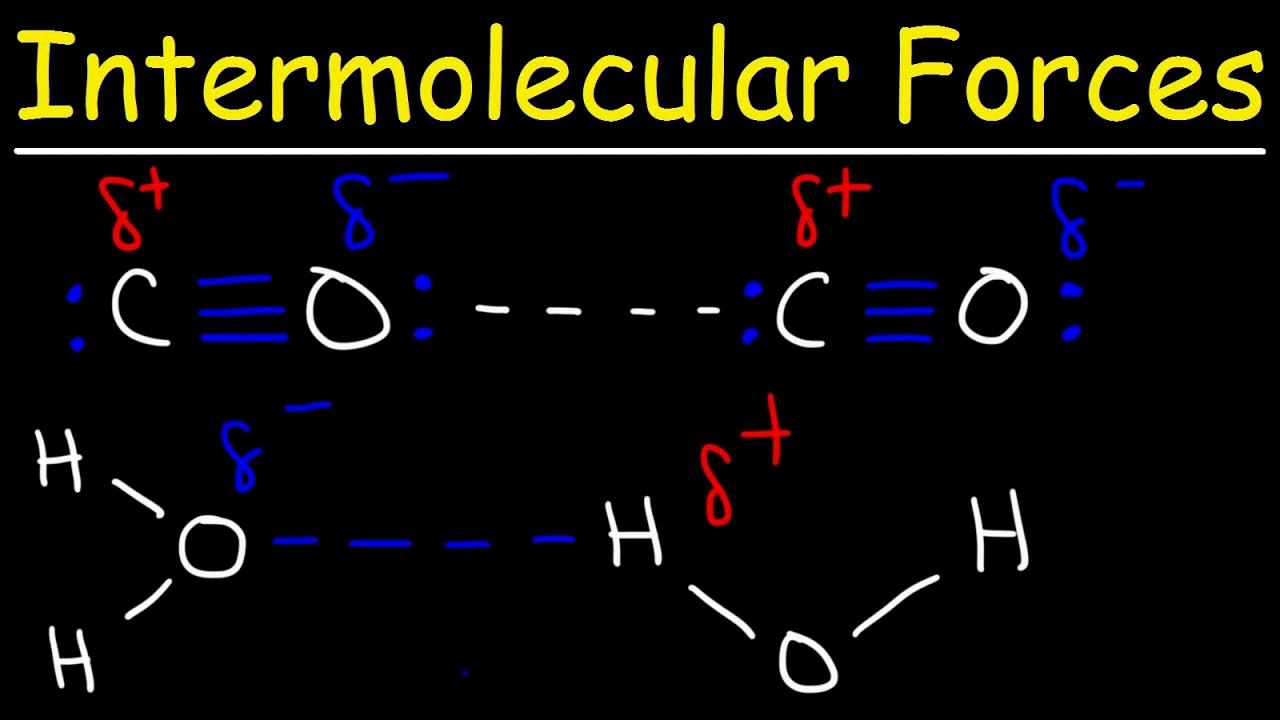Carbon dioxide, commonly known as CO2, is a colorless, odorless gas that is a key component of the Earth’s atmosphere. It is produced during the process of cellular respiration, combustion, and other natural processes. Despite its simple structure, CO2 has several interesting properties, including its intermolecular forces.
Intermolecular forces are the attractive forces that hold molecules together. There are several types of intermolecular forces, including London dispersion forces, dipole-dipole forces, and hydrogen bonding. The strength of these forces depends on the size, shape, and polarity of the molecules involved.
In the case of CO2, the molecule is composed of one carbon atom and two oxygen atoms. Both carbon and oxygen are non-metals, and they form covalent bonds with each other. CO2 has two polar bonds, with the carbon-oxygen bond beig more polar than the oxygen-oxygen bond.
However, despite having polar bonds, CO2 is a nonpolar molecule. This is because the two polar bonds in CO2 are arranged symmetrically around the carbon atom, with the oxygen atoms on opposite sides of the carbon atom. This results in the dipole moments of the two polar bonds canceling each other out, leaving no net dipole moment for the molecule.
As a result, the only intermolecular force in CO2 is London dispersion forces, which are weak forces that arise from the temporary dipoles that occur due to the constant motion of electrons in the molecule. These forces increase with increasing molecular weight and surface area.
In comparison, dipole-dipole forces occur between molecules with permanent dipoles, such as polar molecules. These forces are stronger than London dispersion forces and increase with increasing polarity of the molecules involved. However, since CO2 is a nonpolar molecule, it does not have dipole-dipole forces.
CO2 is a nonpolar molecule that only has London dispersion forces as its intermolecular force. This unique combination of properties has important implications for its behavior in the atmosphere and its role in climate change. Understanding the intermolecular forces of CO2 is an important step in understanding its properties and effects on the environment.
Intermolecular Forces Present in CO2
CO2, also known as carbon dioxide, consists of one carbon atom and two oxygen atoms held together by covalent bonds. The intermolecular forces present in CO2 are dispersion forces, also known as van der Waals forces. These forces are the result of temporary dipoles that occur due to the movement of electrons within the molecule. The strength of these forces is determined by the size of the molecule and its shape. Since CO2 is a small, linear molecule, its dispersion forces are relatively weak.

Source: youtube.com
The Interaction Type of Carbon Dioxide Molecules
CO2 is a nonpolar molecule, even though it has polar bonds. The reason bhind this is that the two C-O bonds in CO2 have dipoles that are equal in magnitude but opposite in direction. As a result, the dipoles cancel each other out, resulting in a molecule with no net dipole moment. This means that CO2 does not exhibit dipole-dipole interactions, which occur between polar molecules. Instead, CO2 experiences London dispersion forces, which are the weakest type of intermolecular forces and arise due to temporary fluctuations in electron density. Therefore, we can conclude that CO2 is a nonpolar molecule that experiences London dispersion forces.
Does Carbon Dioxide Have a Dipole Moment?
Carbon dioxide (CO2) is a linear molecule composed of two polar covalent bonds between the carbon atom and the oxygen atoms. Each oxygen atom has a higher electronegativity than the carbon atom, causing the electrons in the bonds to be pulled closer to the oxygen atoms, making them slightly negative, while the carbon atom becomes slightly positive. However, the two polar bonds are oriented in opposite directions, resulting in the bond dipoles canceling each other out, and the net dipole moment of the molecule becomes zero. Therefore, CO2 does not contain a dipole.
Molecules with Dipole-Dipole Forces
Dipole-dipole forces exist between molecules that have permanent dipoles. Such molecules are polar in nature, meaning that there is an uneven distribution of electrons within the molecule, resulting in a separation of positive and negative charges. Examples of polar molecules include HCl, NH3, and H2O. The strength of dipole-dipole forces between molecules of similar size and mass increases with increasing polarity. Additionally, polar molecules can induce dipoles in nonpolar molecules, leading to dipole-induced dipole forces. Therefore, any molecule that has a permanent dipole moment or can be induced to form a dipole moment can have dipole-dipole forces.
Conclusion
Carbon dioxide (CO2) is a linear molecule that consists of one carbon atom and two oxygen atoms bonded together by covalent bonds. Despite having polar bonds, CO2 is a nonpolar molecule because the dipoles of the two polar bonds cancel each other out due to teir opposite direction. As a result, the only intermolecular force present in CO2 is London dispersion force. CO2’s low boiling and melting points, as well as its inability to dissolve in water, are the direct result of its nonpolar nature and weak intermolecular forces. Understanding the properties and intermolecular forces of CO2 is crucial in various fields, such as chemistry, environmental science, and climate change, as it is a significant greenhouse gas and plays a crucial role in the Earth’s carbon cycle.
